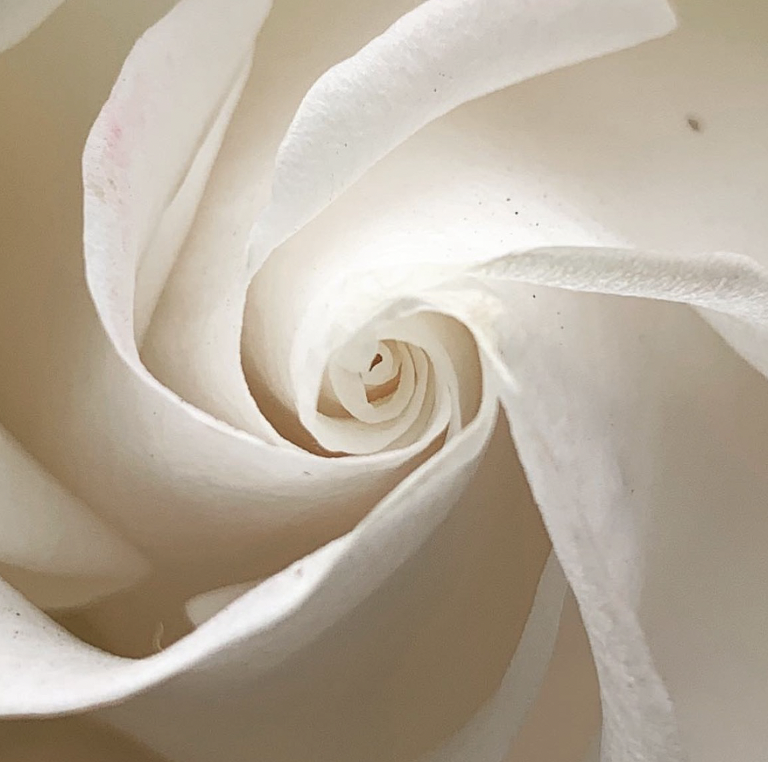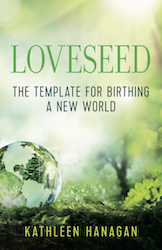
“To heal is to touch with love that which we previously touched with fear.” – Stephen Levine
We are built to heal
Healing is a broad term, and we may be tempted to define emotional, physical, or spiritual healing—or even financial healing—in different ways. Emotional healing may be defined as being free of negative emotional charge from the past, while financial healing may be defined as freedom from debt. Physical healing may be the mending of a limb or the elimination of cancer.
Yet, there is something fundamental to all healing that transcends the different contexts and dimensions. Something is happening that resonates with a knowing inside, with the power in us that is always moving toward wholeness. Healing is a powerful expression of life and leads us in the direction of our Soul, the way plants lean toward the sun as they convert solar energy into their own bodies.
Deep healing is like photosynthesis of the Soul, and it happens in a realm that is not limited by time and space, and yet, is part of nature. In a practical sense, deep healing is what is needed at this time, so that people can move through the trauma and all the resistance to growth that comes from terror and obscuration of light. Tweet
There are many layers to move through since we live in a world where it seems everything is happening everywhere all at once, as the wild adventure of the movie by the same name depicts. Like the characters in that movie who are jumping from dimension to dimension in a valiant attempt to survive, we must return to the light of the present moment happening in the body, in the presence of love.
Shedding the layers
When speaking of transformational work, we often hear the term “peeling back the layers of the onion” to refer to the process of healing and growth. That phrase is actually taken from the quote by the American writer, Carl Sandberg, who said, “Life is like an onion; you peel it off one layer at a time, and sometimes you weep.“
There is truth to the notion of shedding the layers. as each person, consciously or unconsciously, constructs layers of personality that become misconstrued as the true self. The birth process is the first trauma that most humans face, with the need for care and attention in order to survive. This continues, with affronts and assaults of various kinds that cause us to protect ourselves instinctively. By the time we are adults, most human beings are well-guarded in ways we are not even aware of.
The unlayering to know the true self is often a painful one involving, resistance, loss, and grief. Sometimes a person undertakes this process of healing and growth willingly. However, often it is not “chosen” by the personality, but by the Soul, to assist a person to know themselves more fully as the creator of their own experience.
At times this involves entering into a period of dissolution, or ego death, often called a “dark night of the soul,” when a person undergoes a difficult and significant transition to a deeper perception of life and their place in it. This is often accompanied by a painful shedding of previous conceptual frameworks such as identity, relationship, career, habits, or belief systems that had previously allowed the person to construct a sense of meaning.
The Sufi master Hazrat Inayat Khan, like countless other spiritual teachers, says “There can be no rebirth without a dark night of the soul, a total annihilation of all that you believed in and thought that you were.”
These times when we are called to weep and enter into our own darkness are moments of heightened awareness where we begin to realize the inherent emptiness of all things. It can be frightening, destabilizing, and at the same time help us to be more receptive to the voice of the true self, to our essential nature and our deep Soul.
No shame; no blame
Terms like depression, anxiety, existential angst—so much of what is called “mental illness” —are really struggles to undertake this natural process of deep healing with greater consciousness and compassion. Often blame and shame are two of the culprits that can interfere with deep healing.
Blame can be an outward expression, or it can be an inward emotion that shows up as shame. They both can take us away from facing the underlying lesson we are meant to learn, and they can be ways of avoiding the inner work needed for deep healing. If we stay comfortable and never have experiences we don’t want, we will not be able to learn, grow, and evolve into the highest expressions of ourselves.
Once we fully comprehend the process of healing, there will no longer be a need for blame as all experiences are opportunities to learn and to excel in our life's true journey.
The belief that a person is broken or needs to be other than he or she is prevents us from seeing healing and growth in ourselves or others as a beautiful and necessary experience.
- We want healing to be done and over with and enter into resistance to what is happening. We want challenging times to be over with and perceive something wrong when we struggle.
- We perceive ourselves as broken and in need of repair and feel shame about our pain. There is one layer after the other as the disappointment and shame create another layer to be shed.
- The process is endless. Fixing the self can become a full-time job that separates us from our lives. The mistaken belief that we must go about shedding enough layers to get to the heart of the matter leaves us on endless quests for perfection.
Possibly we can see this process of growth, transformation, and deep healing—whatever term you prefer—in a new light—the light of the Soul shining through. Jung said, “Wholeness is not achieved by cutting off a portion of one’s being, but by integration of the contraries.” That leaves a lot of room for a deep breath, and for surrendering to the process itself.
Opening from the center
Healing and growth are part of nature. Just as a branch that is cut off will form new layers to heal and then sprout new growth, so do human beings when they experience a trauma and are connected to their true nature. Essentially, this process never ceases while we are in these bodies.
What guides this process? Why do some people heal, and others not? Why do some people step into their joy and even their greatness due to adversity and suffering, while others are crushed, become bitter, or go into despair? Science has many answers, but never the one that solves the great Mystery. Einstein himself said, “The more I study science, the more I believe in God.”
True healing is remembering the answer to these questions. But how is that possible, with all the layers? It involves experiencing the transcendent while in the body, and it allows a person to open from the center as the light of their own Soul beams through all the layers.
It is what is happening during times we consider miserable, without hope, and lacking meaning, those dark nights of the Soul when there are fewer layers of personality obscuring the light of the Soul. It is during these moments of defeat, as experienced by the ego, that the opportunity to surrender is the gift of the moment.
The light in a gaze of deep love can open a person from the center.
The light that radiates from the heart in a moment of unspeakable compassion, given or received, can open a person from the center.
The light that pours forth during an experience of pure wonder (birth, death, and millions of moments in between) can open a person from the center.
The way light is reflected in the beauty of nature can open a person from the center.
The light in their child’s eyes can open a person from the center.
As we begin to experience the light reflected in all these moments, a further step is to know that we are that light. This is what it means to become conscious on a cognitive level, and it can take us far in our lives.
To truly embody and become one with the light is a life-long journey. In essence, if we undertake this path of deep healing consciously, we become more luminous beings as we age, and the layers seem to fall away. What is really happening is that the layers are being transformed and integrated into the Self of the person, which is now connected to the Soul.
It is the realization that you are the light at the end of the tunnel that removes the fear of death that can accompany aging, or any time in life. It is deep healing to realize that you are creating your life, and that being guided by your Soul gives you a great shot at inner peace and joy, even in the midst of turmoil and suffering.
The role of psychedelics in deep healing
There are many ways to experience deep healing. The re-emergence of psychedelics in therapy shed a new light on this process, that facilitates a more rapid and focused connection with the true self, as many layers fall away at once. With the temporary dampening of the DMN (Default Mode Network), the brain is open to a primary, collective, and cosmic consciousness in multiple dimensions outside of linear time/space. It’s as if a laser light beams through all the layers at once, revealing what is essential.
Research has validated that during psychedelic therapy, many people have what is called a “mystical experience,” which is when a person experiences him/herself to be one continuous process with God, the Universe, the Ground of Being, or whatever name he/she may use for the ultimate and eternal reality. The layers fall away, the heart opens, and love is deeply felt.
Once that essential nature has been experienced, our self-perception and perception of reality is changed forever. The capacity for deep healing is ignited in a very powerful way, if we can integrate the experience into the expanded view, rather than return to the default way of seeing the world.
This powerful transcendent opening is not the only way people experience psychedelics. Indeed, due to the trauma and the rampant PTSD of our modern culture, a person may need to release a great deal of physical, emotional, and mental pain which can be a rigorous and at times agonizing experience, Anyone who will be “holding space” for people taking psychedelics needs to be trauma-informed, and well-acquainted with altered states of consciousness.
Presently, the only psychedelic available for legal use therapeutically, in most states, is ketamine, which is a potent gift for deep healing. Research shows that the optimal benefit comes when this medicine is experienced in conjunction with either good psychotherapy or guidance from someone trained like a mental health therapist to support the growth from altered states of consciousness.
There is a precious window of time after the use of a psychedelic when our neuroplasticity is most high. In simple terms, this means that the brain is more flexible and able to make desired changes, and the layers of resistance seem to have fallen away.
At these times, we have greater access to our own essential light nature, which can then beam through the layers into our lives. This is high vibrational energy that can be utilized to make changes that are otherwise difficult to make. For this very reason, guidance is essential if psychedelics are to be used as agents of transformation and deep healing. And it shows us that anyone serving in the role of “healer” or guide when it comes to psychedelics, must undertake their own journey of deep healing—-must have access to the light of their own Soul.
Many paths to healing
Whether a person uses psychedelics, breathwork, Hakomi, Reiki, Quantum healing, Family Constellation work, acupuncture, psychotherapy, iridology, or western medicine, healing can happen.
The common thread is the deep desire to heal, and light which is love in form, whether it is the skill and compassion of the surgeon performing an operation, the vet treating a sick horse, or the curandera performing a ritual.
The true work of spiritual and emotional healing, which may arise originally due to the need for physical healing, is allowing the wounding to wake us from a deep state of unconsciousness so that we can begin consciously piecing together the full truth of who we were meant to be.
Hippocrates said, “Before you can heal someone, ask him if he’s willing to give up the things that made him sick.” Sometimes we are so attached to our suffering and pain, that we use it as a security blanket. Tweet It is the known, the familiar, and healing opens us to new possibilities that can be frightening.
All of us need healing. It isn’t easy being human, and it’s not possible to walk through this life without experiencing wounds that keep us from shining our full light in the world.
At times, deep healing may not mean that someone heals from cancer and survives physically if indeed, their illness opened the way for deeper healing of the Soul. Years ago, I read a book called The Death of A Woman: How A Life Became Complete, in which a Jungian analyst records the last few months of therapeutic meetings between herself and a thirty-seven-year-old woman dying of cancer. This dying woman confronted her deepest fear, of death itself, as she connected to an eternal part of her being.
Whatever it is that calls to a person for deeper healing, whether it is pain in the heart, the body, or the mind, it is the Soul that knows healing is possible. Whatever it is that the “healer” does to support that process, it is the Soul of the healer that receives that call.
May all beings experience deep healing.
May all beings realize the light of their own true nature.
May all beings feel happiness and the causes of happiness.


